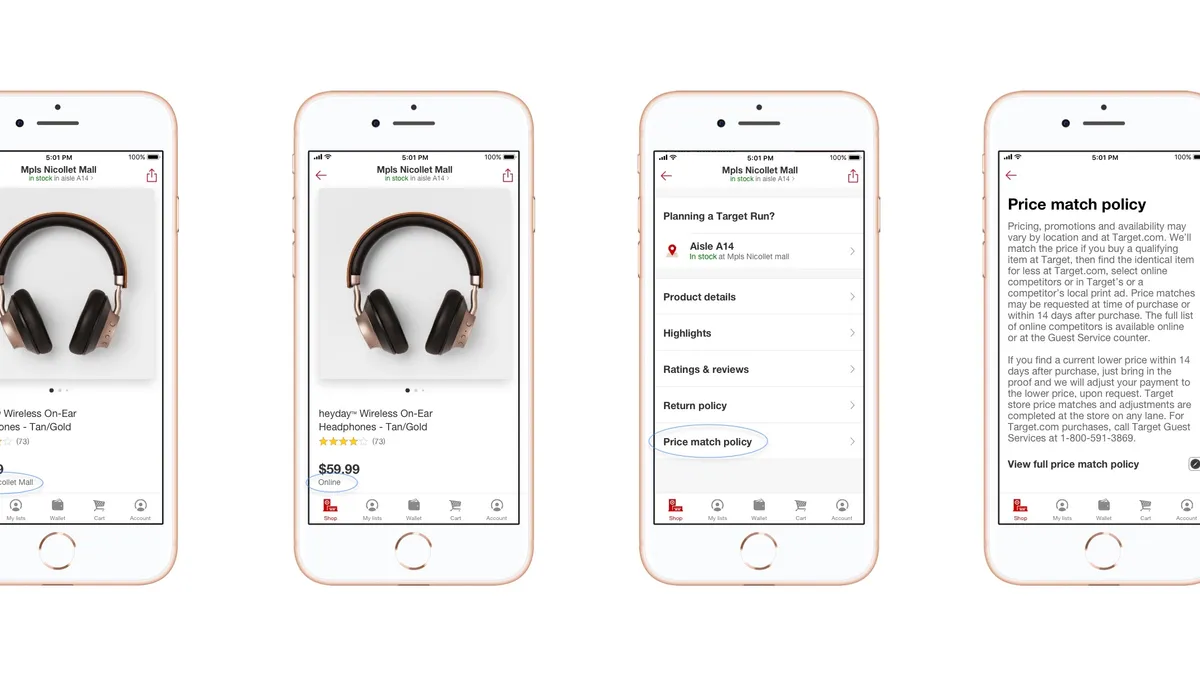Dive Brief:
- Target recently made a number of changes within its mobile app "to make it easier to understand pricing and our price match policy," a company spokesperson said in an emailed statement to Retail Dive Monday. The updates came in response to feedback the company received.
- After a two-month investigation into consumer criticism, Minneapolis TV station KARE-TV reported late last month that prices on Target's mobile app increased as users got closer to stores. The station randomly selected and tracked pricing for 10 items, and reporters found that for four, prices jumped when they walked into the store. A Dyson vacuum, for instance, cost $148 more on the app while inside the store.
- "Each product will now include a tag that indicates if the price is valid in store or at Target.com. In addition, every page that features a product and price will also directly link to our price match policy," according to the company's statement.
Dive Insight:
As much as retailers say they're moving toward a world where the customer experience is consistent across all channels — be they stores, online or on mobile — dynamic pricing is one major tactic standing in the way. For brick-and-mortar mass merchandisers like Target and Walmart, though, competing with Amazon on price is essential to survival in the e-commerce landscape. It's also a selling point to their customers.
"Target’s price match policy allows guests to match the price of any item they see at Target or from a competitor, assuring they can always get the lowest price on any item," the company said.
Dynamic pricing plays a "crucial role" in increasing consumer price perception and retailer profitability, according to a 2017 report by McKinsey & Company's retail division. Amazon is arguably the king of this strategy. When it came to transactions on Amazon's marketplace, the use of dynamic pricing or "repricing software" increased by 15% in 2018 over the previous year, according to a report from Feedvisor.
Pricing has long been one of the most important differentiators in retail, but the danger for those with a formidable brick-and-mortar presence will be to keep a consistent message across all channels and to communicate pricing changes to customers.














